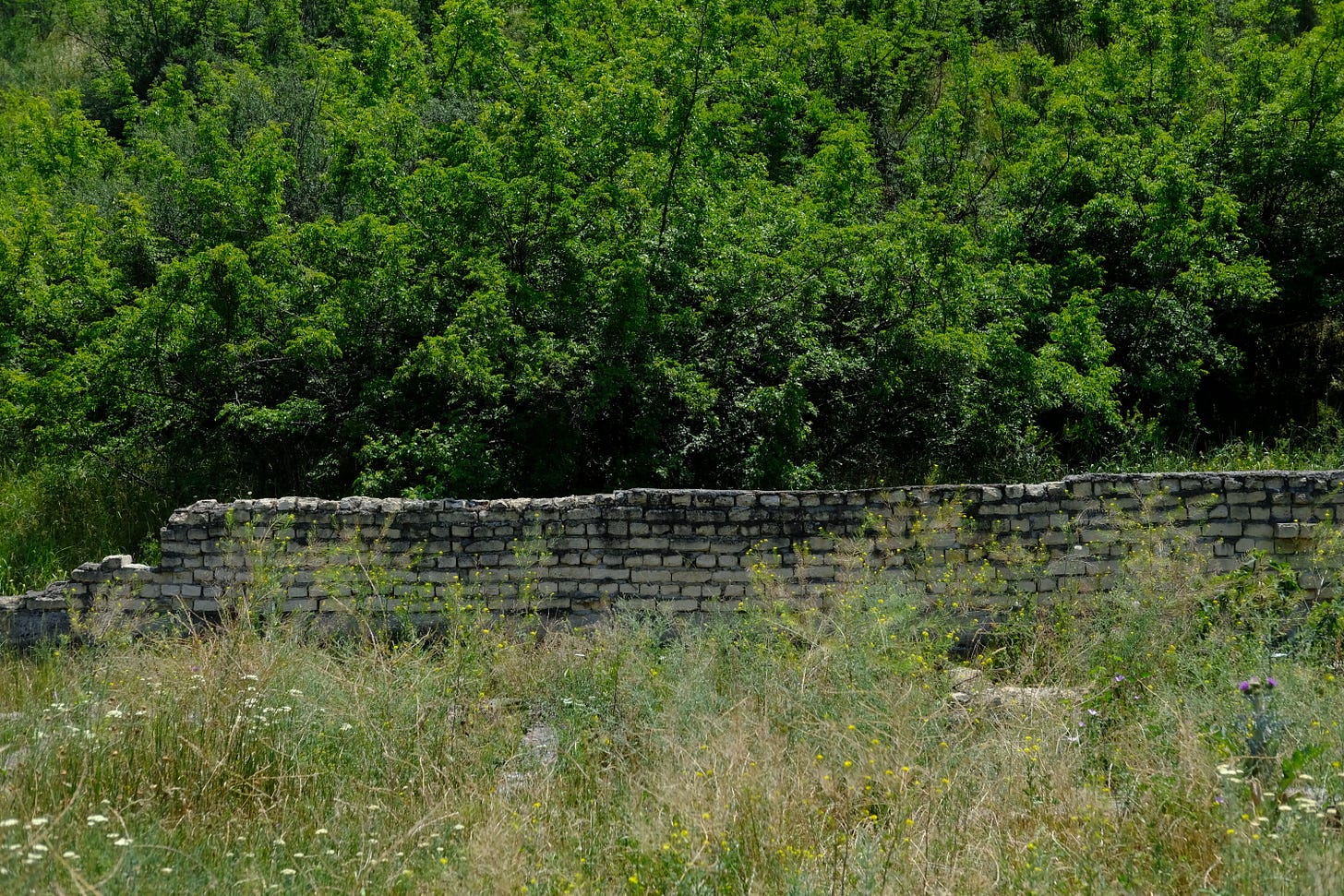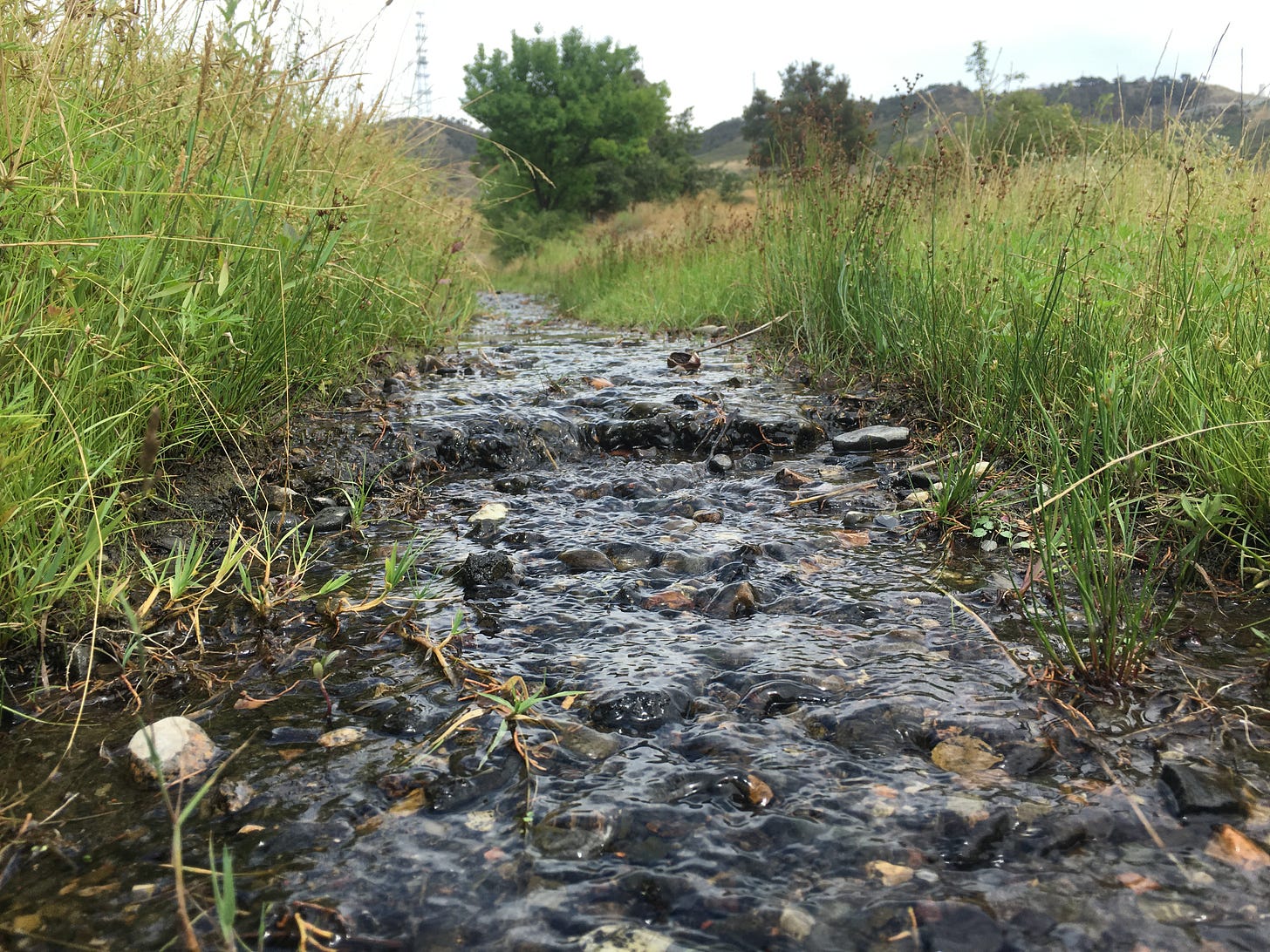Report from the Field
A morning of landscape exploration on Arsenal site with the Ruderal Training Program
I’ve lost track of the students. We are on Arsenal, a thumb of open space thrust towards the heart of old Tbilisi. The sky is overcast, the ground uncharacteristically soft after the morning’s rain. Normally at this time of day the summer sun would make being here unbearable, and the trainees would be squatting in the shade of the Oasis. Today, however, they’ve struck out into the ruins of the former camp and quickly disappeared into the scrub.
I spot Timm first. He pops up, suddenly, from behind a crumbling wall. That morning, he had told me his plan to document every interesting plant he had seen on our previous visit. He is stalking them low to the ground, building his inventory a picture at a time. He comes to Ruderal from Glasgow Caledonian University as an environmental management intern.
Tamar walks out from behind a cypress some ways away. The cobble road she is on runs the length of Arsenal. There are seemingly abandoned shacks irregularly slung along it. Squatters, we think. The structures continue, but I had warned them all of the barely domesticated dogs at the end guarding the rusted gate. After a moment, Tamar takes a few more steps towards the gate. A friendly labrador leaps out of the grass beside the road and trots alongside her.
Arsenal is not a dangerous place, but people have largely abandoned it. Birds, snakes, and dogs have made the territory their own, and are not keen on intruders. Residents of nearby apartments and houses tend to stay on the periphery. Most only engage with Arsenal when they dump their waste bins into its deep ravines. Still, there are a few who recognize the value in this place, and I toe through the ashes of one of their fire pits. I imagine being here after sunset when the lights of Narikala and Mtatsminda flicker on across the valley.
Dato messages me. It is a picture of two men standing next to the frog pond. I already know that Dato has made these men his friends, and will relate the story to the other students that afternoon. One is holding a plastic pail and soap, a damp-looking cigarette dangling from his mouth. The other is scowling at a half-wet dog happily shaking itself dry. Near my fire pit, the ants don’t seem to mind the occasional beer can. I wonder how the frogs feel about the soap in their water.
I make my way down the sloping site, picking my way through the remains of the barracks. There is a thicket of tree-of-heaven, one of the more successful pioneers in Arsenal’s difficult soil. Elsewhere on the slope, it grows just downhill of surface water, a pattern I am trying to confirm. Long before I reach it, I see a yellow cap push through the leaves, followed by the rest of Iveta. A former student at the State Academy of the Arts, she sought out the training program to keep learning and find new tools to engage with her home. She spends hours making detailed sketches of the sites we visit.
Arsenal is satisfyingly full of mysteries. There are towering oaks shading worn inscriptions on broken stones; stairs that begin and end seemingly at random, their landings long disintegrated; carefully constructed pits with no discernible purpose; a single broken pipe supporting an entire ecosystem. I can’t wait to see what else they’ve discovered.










